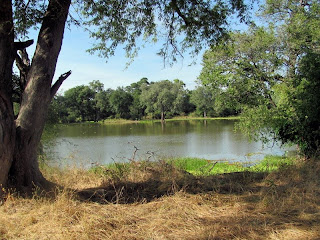The most common stereotype of white people is that they live in Kabulonga, are rich and hang out with other people either there or at Manda Hill and Arcades. There are some other stereotypes and expectations that surface in different situations. So, who or what am I:
-Celebrity: Everybody knows me: I hear words like Kamwala South and Chawama often around me.
-Zoo animal: Some boys actually took photos of me in a minibus.
-Potential friend: A woman at Kuku market declared that she wants me to be her new best friend. Also asking my phone number is very popular. It doesn't even mean that they would call me but just having a white girl's number is something.
-Potential employer: I've been stopped a few times by women who have inquired whether I need a maid.
-Racist: I refused to shake hands with a man who seemed to me to be either drunken or crazy, so he concluded that I won't shake hands with him because he is black.
-Respected or scary?: I went to watch a performance of one of the cultural groups at KYP. When I was in the audience, there was a half a meter of space around me that no-one dared to break even though normally 'personal space' is an unknown concept.
-Donor: The performance was about malaria prevention. After the performance, a woman came to talk to us and asked how she is supposed to get a mosquito net. She was clearly expecting me to be giving them away. I've also been asked to start a college - and the person asking that was well-educated and smart.
-Backpacker: When I go to the intercity bus station, the men there always expect me to be going to Livingstone. When I get off a bus there, the taxi drivers suggest taking me to Chachacha Backpackers.
-Bank: I get asked for a loan way too often.
-Sight: I've lived here now for over four months. Still, all the children want to greet me when I pass by. While travelling, if the car stops in any rural area, it is very quickly surrounded by curious children staring at me.
-Status symbol: I was walking with a guy to Kanyama, and he wanted to stop by at all of his relatives and friends just to show me around.
-American: This is one of the funniest ones. Someone started a conversation with me by saying “America is a great country, isn't it?”. Some have assumed that I'm from Peace Corps.
-African: When I had my hair braided, I received an unimaginable amount of positive feedback. Not only friends and colleagues but also strangers in the streets and minibuses complimented me on my hair. Some also said that now I'm a real African.




























